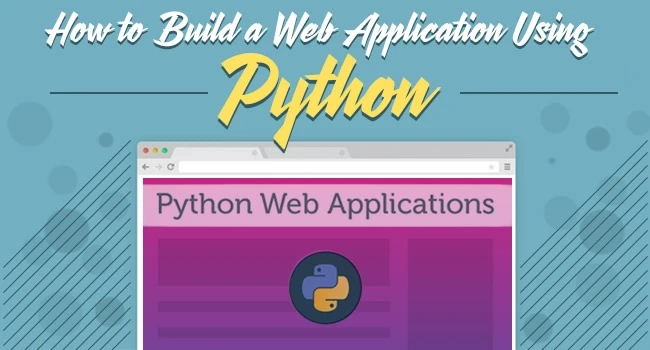Introduction
In the dynamic realm of web development, Python has emerged as a robust and scalable language for crafting web applications. Among the array of frameworks available, Flask and Django shine as favoured choices for developers due to their simplicity, flexibility, and scalability. This guide extensively delves into the intricacies of Python web application development, focusing on Flask and Django, and explores how these frameworks can be harnessed to create potent applications. If you are embarking on a Python course, comprehending these frameworks is indispensable for your foray into the world of web development.
WHAT IS FLASK?
Lightweight and Microframework:
Flask is often labelled a "microframework" as it furnishes the essentials for web development without imposing overly rigid restrictions or pre-defined patterns. Developers can select and integrate components as required, rendering it flexible for a diverse range of applications.
Minimalistic and Easy to Learn:
Flask adopts a minimalistic approach, making it easily comprehensible for beginners. Its simplicity enables a quick start, facilitating the building of applications with concise code.
Extensibility:
Designed to be extensible, Flask empowers developers to incorporate features as required. While certain components are not included by default (e.g., an ORM for database operations), developers can seamlessly integrate third-party libraries for such functionalities.
Jinja2 Templating:
For rendering dynamic content in HTML templates, Flask employs the Jinja2 templating engine. This separation of concerns between application logic and presentation enhances code readability.
Best Suited For:
Small to medium-sized projects
Projects prioritisation flexibility and minimalism
Developers who prefer a hands-on and modular approach to web application development
WHAT IS DJANGO?
High-Level and Full-Stack Framework:
Django stands as a high-level, full-stack web framework, equipped with built-in features like an ORM (Object-Relational Mapping), an admin interface, and a robust templating system. Following the "batteries included" philosophy, it provides numerous tools and functionalities out of the box.
Opinionated and Convention Over Configuration:
Django is opinionated, adhering to a set of conventions that developers are expected to follow. Embracing the "don't repeat yourself" (DRY) philosophy, it minimizes redundancy and encourages code reuse.
Admin Interface:
Featuring a powerful and customizable admin interface, Django automates many administrative tasks, simplifying backend management.
Django ORM:
Django incorporates its own Object-Relational Mapping (ORM) system, enabling developers to interact with databases using Python code rather than raw SQL queries.
Best Suited For:
Large and complex projects
Projects where rapid development and convention-based structure are advantageous
Developers who appreciate an integrated and feature-rich framework for web application development
Chapter 1: Getting Started with Python Web Development
1.1 Overview of Python in Web Development
Python's syntax, readability, and extensive libraries make it a preferred choice for web development. This chapter explores how Python can be utilised on both the server and client side, showcasing its versatility in crafting dynamic web applications.
1.2 Introduction to Flask and Django
Flask and Django, both popular Python web frameworks, serve distinct purposes. This chapter provides an overview of each framework, discussing their strengths, weaknesses, and use cases to help you determine the well fit for your project.
Chapter 2: Deep Dive into Flask
2.1 Setting up a Flask Project
This section guides you through the process of setting up a Flask project, explaining the directory structure and essential files. It includes creating virtual environments and installing necessary dependencies.
2.2 Creating Routes and Views
Understanding routes and views is crucial for Flask development. This chapter explains how to define routes and views, enabling the creation of dynamic content for your web application.
2.3 Templates and Static Files
Flask supports Jinja2 templates for rendering dynamic content. The chapter explores effective template usage and managing static files for a polished and interactive user experience.
2.4 Database Integration with Flask
Databases are fundamental to web applications. This section covers integrating databases with Flask, discussing popular choices like SQLite, MySQL, and PostgreSQL.
2.5 Flask and SEO Best Practices
Optimising your web application for search engines is vital. This chapter delves into Flask-specific SEO best practices, covering URL structuring, meta tags, and sitemaps.
Chapter 3: Mastering Django
3.1 Setting up a Django Project
Django, following the "batteries included" philosophy, provides a robust set of tools. This chapter guides you through setting up a Django project, explaining the project structure and configuration.
3.2 Django Models and ORM
Django's Object-Relational Mapping (ORM) simplifies database interactions. The chapter covers defining models, creating migrations, and performing database operations using Django's ORM.
3.3 Views and Templates in Django
Similar to Flask, Django uses views and templates to handle user needs. This chapter explores the Django way of creating views and rendering dynamic content using templates.
3.4 Django Forms and Authentication
User input and authentication are critical aspects of web applications. The chapter discusses Django forms for handling user input and delves into built-in authentication mechanisms.
3.5 Django and SEO Best Practices
SEO is crucial for a web application's visibility. This section focuses on Django-specific SEO practices, covering URL patterns, canonical URLs, and optimising content for search engines.
Chapter 4: Join a Python Course
6.1 Choosing the Right Python Course
For those in Jaipur eager to learn Python web development, this section guides you in selecting the right course. It discusses essential topics to look for, including curriculum, hands-on projects, and mentorship opportunities.
6.2 Real-world Projects and Portfolio Building
Building real-world projects is crucial for applying your Python web development skills. This chapter discusses how joining a python course in Faridabad, Kolkata, Noida, Pune, or other cities in India can provide opportunities to work on projects and build a portfolio showcasing your abilities.
Conclusion:
In this comprehensive guide, we've explored the fundamentals of building web applications with Python using Flask and Django. Whether you're a beginner starting your journey in web development or an experienced developer seeking to enhance your skills, understanding these frameworks is essential. This guide provides a solid foundation for your learning journey if you're considering a Python course.


